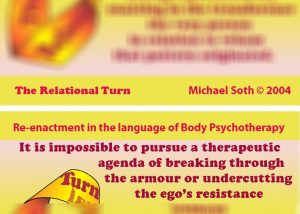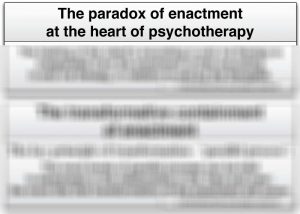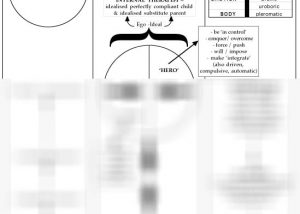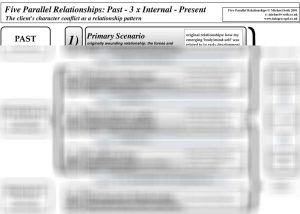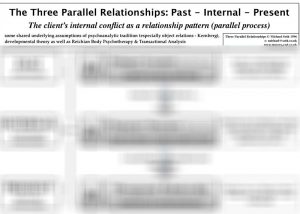About our CPD Resources
For the last few years, all of these have been publicly available, but from now on - as previously announced - access to most of the resources is restricted to subscribers/members of the site.It is free to register for the site, and it only takes a minute - all you need to do is give your name and email, and you will receive a confirmation email. As a member of the site you will then receive occasional newsletter updates, never more than 6 per year (usually it’s about 4).
Once you have registered, every time you want to access any of the resources, all you need to do is log-in to the site, using the log-in link in the top right corner of each page. You are welcome to use and distribute these materials, including for your own teaching, as long as you reference them and observe the copyright, by keeping copyright details visible.

The Diamond Model of Modalities – Overlaps & Tensions (2004)
This handout summarises the dynamic system of the modalities of the therapeutic relationship, the hexagon representing the therapeutic frame, and all modalities having potentially therapeutic as well as countertherapeutic effects. to some extent the modalities overlap, but traditionally therapists have [...]
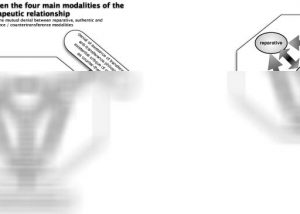
The Diamond Model of Modalities – Tensions (2004)
This handout summarises the dynamic system of the modalities of the therapeutic relationship, the hexagon representing the therapeutic frame, and all modalities having potentially therapeutic as well as countertherapeutic effects. to some extent the modalities overlap, but traditionally therapists have [...]

Is it Possible to Integrate Humanistic Techniques into a Transference-Countertransference Perspective? (2004)
This was written as a response to a brilliant and helpfully clarifying article by Lavinia Gomez 'Humanistic or psychodynamic - what is the difference and do we have to make a choice ?', which tackles this difficult theme in a [...]
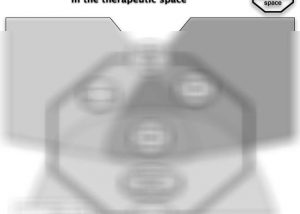
The Diamond Model of Modalities – Overlaps (2004)
This handout summarises the dynamic system of the modalities of the therapeutic relationship, the hexagon representing the therapeutic frame, and all modalities having potentially therapeutic as well as countertherapeutic effects. To some extent the modalities overlap, but traditionally therapists have [...]
The Relational Turn – Moebius (2004)
I formulated the key insight which for me constitutes the 'relational turn' in two languages: one as relevant in ALL psychotherapeutic approaches, and one formulated in the language of Body Psychotherapy. Because it is such a crucial insight, I turned [...]

Humanistic or psychodynamic – what is the difference and do we have to make a choice? (Lavinia Gomez 2003)
This brilliant and helpfully clarifying article by Lavinia Gomez tackles the difficult theme 'humanistic or psychodynamic' in a non-dogmatic and fairly comprehensive fashion. Lavinia poses some challenging questions, especially for integrative therapists: how free and fluid can we allow ourselves [...]
The Relational Turn (2003)
My formulation of what I call the 'relational turn' in two versions: 1. in the language of Body Psychotherapy (i.e. where I first discovered it); 2. in a generic formulation applicable to all kinds of therapeutic approaches. To my mind [...]
The Paradox of Enactment (2003)
The 'relational turn' is a paradigm shift into the paradoxical foundation of psychotherapy: having recognised that ""it's the relationship that matters"" in therapy, we then see that the working alliance - which holds this professional and apparently artificial and contrived [...]

Psychotherapy: Paradoxes, Pitfalls & Potential (2003)
This article was written for the magazine 'Self & Society' following the workshop series I ran in 2003 on the paradoxes inherent in psychotherapy. In the workshops I addressed specifically six paradoxes which do not even get a mention in [...]
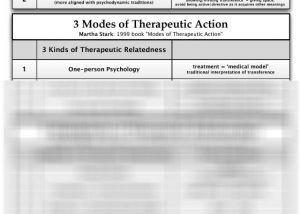
The Therapist’s Relational Stance (2003,2010,2015)
This handout is a summary of three useful and mutually complementary formulations/models, which help us understand the therapist's relational stance. A good starting point for naming and describing relational stances is Lavinia Gomez’s (2003) distinction between being ‘alongside’ the client [...]
The Conflicted Ego (2002)
Building on the formulation of 'the conflicted ego in conflict with a spontaneous conflict', as implied in the 5 parallel relationships (see 1998 handout), I started trying to put the various components that students were struggling with into one handout, [...]

What is ‘Working with the Body’ ? (2002)
This was an invited response to a case presentation by Maggie Turp, a psychodynamic therapist who has initiated a consideration of the body and of the importance of wellbeing in psychoanalytic circles. Whilst this must be a worthwhile project and [...]
5 Parallel Relationships (2001)
This handout is a more complex elaboration of the previous one, based upon further distinguishing the internal object relations (i.e. the ways in which the client is relating to themselves, and the multiple self states involved) into three further parallels: [...]

Re-formulating the Notion of the ‘Body/Mind Split’ (2000)
This is an extract from "The Integrated BodyMind's View on 'Body/Mind Integration' (2000)", as it is often requested on its own. It basically critiques the notion of 'body/mind split', but then uses it to focus more precisely on what experiential [...]

The Integrated BodyMind’s View on ‘Body/Mind Integration’ (2000)
This was written as an article following a presentation to the Chiron Association's (AChP) AGM in 1999. During the presentation itself I more or less did the opposite of what I was talking about and modelled a fairly dis-integrated stance. [...]
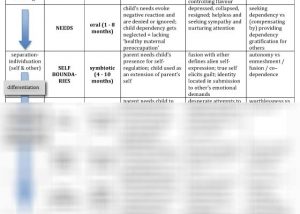
Character Styles and Structures – Overview Chart (2000)
Some years after I had formulated my critique and misgivings about the application of character structure theory in traditional Body Psychotherapy, I was asked to give my own updated summary of the different character styles, in this chart is the [...]

Clarkson’s 5 Modalities of the Therapeutic Relationship – extended to 7 (1998)
This is my own version of the extension of 5 modalities to 7, to include 'medical model' relating and archetypal relating (based upon Hillman's 'The Myth of Analysis'). Other therapists have suggested the intercultural level of relating as a 6th [...]
The Body in Counselling (1999)
This was written for a psychodynamically oriented audience from an integrative perspective, outlining - with no attempt at a comprehensive formulation - some of the ways in which the body enters the counselling room and the counselling relationship. To gain [...]

Relating to and with the Objectified Body (1999)
This was my first public attempt at spelling out the difficulties and pitfalls of Body Psychotherapy as I knew it in the late 1980's and the early 1990's. It took years to become aware of and formulate the hidden 'medical [...]
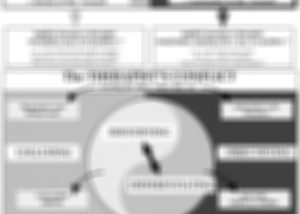
The Therapeutic Position in the Conflict between Colluding and Objectifying (1997)
This handout is the original formulation how the client's internal conflict necessarily puts the therapist in conflict. The client's chronic conflict is formulated here in generic terms as a polarised split between 'habitual mode' and 'emergency' (usefully alluding to both [...]
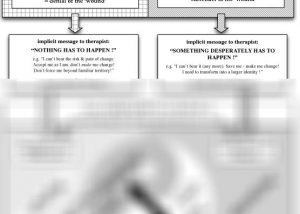
The Client’s Conflict becomes the Therapist’s Conflict (1998)
This handout is a later version of the original formulation how the client's internal conflict necessarily puts the therapist in conflict. The client's chronic conflict is formulated here in generic terms as a polarised split between 'habitual mode' and 'emergency' [...]

Collective Mothering and the Medical Model (1997)
This is a longer article on the same theme as my letter with the same title to the European Psychotherapy Journal, written later and more detailed. It was cobbled together from two articles in consecutive issues of the AChP Newsletter [...]
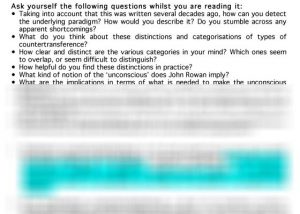
Types of Countertransference (after John Rowan – Critique) (1996)
The following list of types of countertransference was first published more than 30 years ago, by one of the elders of the humanistic tradition in the UK, John Rowan. He was then already modelling an interest and learning from the [...]
3 Parallel Relationships (1996)
This handout is fundamental to a relational conception of therapy, recognising the parallels between past, internal and external relationship dynamics. It is similar to Michael Jacob's seminal psychodynamic textbook ""The Presenting Past"", but based on an understanding of character formation, [...]

